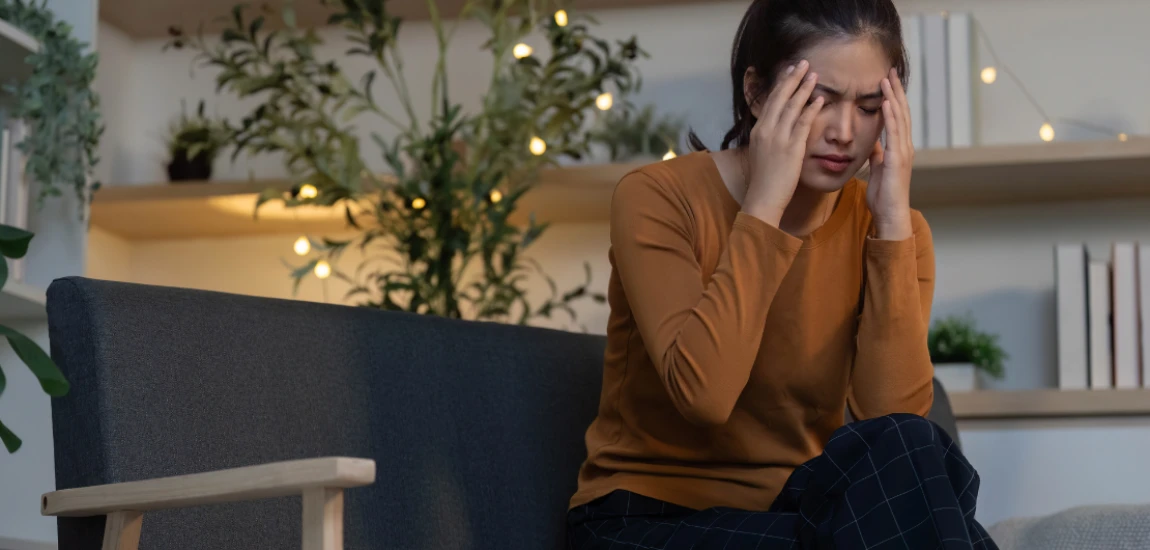The Aesthetics of Anxiety: Why Everything Looks Like a Liminal Space Now

Open TikTok, Instagram, or Tumblr today, and you’ll notice a recurring theme: empty malls, flickering fluorescent lights, deserted hallways, or eerily quiet parking lots. These unsettling visuals fall under what’s known as liminal spaces, and they’ve become shorthand for the aesthetics of anxiety in our digital age. Far from being a niche internet trend, this style reflects deeper cultural moods—feelings of uncertainty, unease, and dislocation in modern life.
In this blog, we’ll explore why everything suddenly looks like a liminal space, how the aesthetics of anxiety shape art and media, and what these unsettling visuals reveal about society’s collective state of mind.
Understanding the Aesthetics of Anxiety

To understand why liminal spaces dominate visual culture, we first need to break down what the aesthetics of anxiety really mean.
Defining liminal spaces
A liminal space refers to a place that feels “in between.” Think of an empty school hallway at night, a deserted office cubicle farm, or a vacant shopping center. These places are familiar, yet stripped of their expected activity, creating a sense of eerie displacement.
Why these visuals resonate
The aesthetics of anxiety tap into our unconscious fears of isolation, stagnation, and uncertainty. The emptiness in liminal spaces mirrors collective feelings of instability—whether it’s economic insecurity, climate change, or the disruptions of the digital age.
Anxiety as an artistic lens
In many ways, these visuals serve as a cultural mirror. Artists and creators use liminal spaces to externalize invisible anxieties, making internal emotions visible. The result is a haunting but oddly relatable aesthetic that speaks to our shared unease.
The Internet’s Role in Popularizing Liminal Aesthetics

While liminal imagery existed long before, the internet has amplified it into a mainstream aesthetic.
The rise of nostalgic internet culture
Platforms like Tumblr and Reddit began circulating liminal images in the 2010s. Nostalgic “backrooms” memes—depicting endless yellow hallways—struck a chord because they combined familiarity with unease, evoking both childhood memories and subtle dread.
TikTok and the viral spread
TikTok transformed liminal aesthetics into a viral trend. Paired with eerie ambient music, videos of abandoned malls or school corridors became emotional storytelling tools. The short-form format made the aesthetics of anxiety easy to remix, share, and globalize.
Algorithmic amplification
Social media algorithms thrive on emotional engagement. Content that evokes discomfort or curiosity tends to perform well, ensuring that liminal spaces dominate feeds. The more unsettling the imagery, the more likely it is to capture attention and spread widely.
Why the Aesthetics of Anxiety Reflect Our Times

The popularity of liminal aesthetics isn’t random—it’s deeply tied to current cultural and social conditions.
Living in uncertain times
We live in an era defined by uncertainty. From the pandemic to political instability and rapid technological change, everyday life feels precarious. Liminal visuals embody this sense of “being in between” stability and collapse.
The collapse of traditional spaces
Shopping malls, office buildings, and schools—once centers of social activity—are increasingly abandoned or digitized. Their emptiness reflects broader societal shifts, turning once-familiar spaces into eerie relics of the past.
A generational perspective
For Gen Z and millennials, liminal aesthetics resonate because they symbolize delayed milestones, precarious futures, and feelings of alienation. These generations are uniquely positioned to embrace the aesthetics of anxiety as both a coping mechanism and a cultural expression.
How Liminal Aesthetics Shape Media and Design

The aesthetics of anxiety have expanded beyond internet memes into broader creative industries, influencing how media, design, and branding are produced.
Film and television
From Stranger Things to Severance, shows use liminal visuals to heighten unease. Empty offices, flickering lights, and endless hallways become narrative tools that externalize anxiety, reflecting not just character experiences but audience emotions.
Video games and digital worlds
Games like Control or The Stanley Parable directly incorporate liminal design, immersing players in unsettling in-between spaces. The interactive format makes the aesthetics of anxiety even more powerful, blurring the line between play and discomfort.
Branding and visual culture
Even advertising has begun experimenting with liminal visuals. By tapping into the aesthetics of anxiety, brands create striking, memorable campaigns that reflect the cultural zeitgeist—though often controversially, since commercializing unease risks alienating audiences.
The Future of Anxiety Aesthetics

If liminal spaces reflect today’s anxieties, what happens next? Will the aesthetics of anxiety continue dominating, or will cultural moods shift toward something new?
Evolving with technology
As VR, AR, and AI-generated imagery become more mainstream, expect liminal aesthetics to evolve into immersive experiences. Virtual liminal worlds could become popular spaces for art, gaming, and storytelling.
The therapeutic potential
Interestingly, for some, liminal spaces offer comfort rather than fear. By facing eerie visuals in safe digital environments, audiences may process anxieties indirectly. The aesthetics of anxiety could become a form of digital catharsis.
Beyond liminality
At some point, cultural tastes may pivot away from eerie nostalgia toward more hopeful aesthetics. Yet the legacy of liminal spaces will endure, reminding us how deeply visuals can capture the emotional climate of an era.



